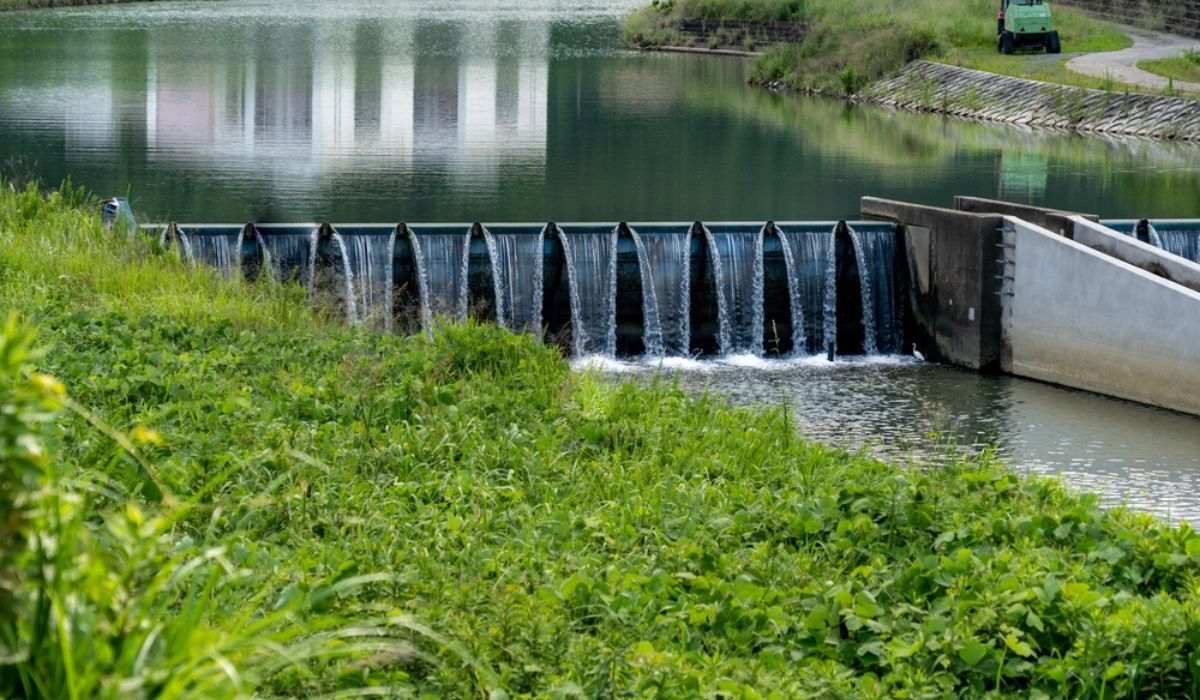Weirs are important hydraulic structures used for water management, serving as effective solutions for a variety of applications. Essentially, a weir is a simple yet ingenious structure designed to control the flow of water in rivers, streams, and other water bodies. In this article, we will talk about the meaning of a weir, its importance, uses and elements.
What are weirs?
Weirs are essential constructions used in hydraulic engineering and water management that regulate and modify water flow. These barriers, which are usually erected over rivers and streams, have several uses, including managing the water supply, controlling flooding and providing irrigation. Weirs are an essential part of many civil engineering projects because their construction requires a careful balancing act between environmental concerns and engineering precision.
In essence, a weir is a barrier erected over an open channel to change the water’s flow characteristics. Depending on the intended use and the particular hydraulic conditions of the site, its design may differ significantly. A crest, the weir’s highest point and an apron, which diffuses the energy of the flowing water to stop erosion, are typical components, though. There are several types of weirs, each with a specific use in mind. Examples of these types are broad-crested weirs, sharp-crested weirs and V-notch weirs.
Importance of weirs
Weirs are a great tool for managing water, but their construction can have negative effects on the surrounding ecology. Fish migration patterns, sediment transport and effects on aquatic habitats are among the possible outcomes. To reduce ecological disturbance, fish-friendly passageways and sediment bypass systems are common components of contemporary weir designs.
Weirs are incredible examples of engineering design that combine practicality and environmental awareness in the field of water management. They provide solutions for a variety of problems, from flood control to hydropower generation, because they are adaptable structures. Weirs must be built with great care, taking into account the environment, material choices and design details to ensure that the buildings not only accomplish their goals but also coexist peacefully with the ecosystems they affect. Weirs play a critical role in the delicate balance between human needs and environmental preservation. Their importance in construction is only going to increase with the demand for sustainable water management solutions.
Elements of weirs
Crest
The weir’s highest point, the crest is essential in determining the water level upstream. Its shape can vary depending on the desired properties of the flow.
Apron
Stretching out from the weir’s base, the apron is a structure located downstream. Its goal is to disperse the water’s energy to stop erosion and scouring.
Control structure
To control the water flow, weirs frequently include control structures like gates or movable parts. Engineers can now control water levels and discharge to project specifications.
Foundation
The weir structure needs stability, which the foundation offers. The soil’s properties and the hydraulic forces generated by the water have an impact on the design and material selection of the foundation.
The uses of weirs
Flood control
During times of increased precipitation, weirs are essential for regulating the flows of rivers and streams. Through the management of water levels, they lessen the possibility of flooding in areas downstream.
Irrigation
By offering a regulated and reliable water supply, weirs are frequently advantageous to agricultural practices. Weirs help distribute water for irrigation in an efficient manner.
Water supply
Water supply systems depend on weirs to maintain a consistent, controlled flow of water for residential, commercial and municipal needs.
Hydropower generation
Weirs use the kinetic energy of flowing water to generate electricity in certain configurations that contribute to hydropower generation.
Points to consider
To guarantee structural integrity and functionality, a weir must be constructed in a series of sequential steps. It is essential to conduct a preliminary site analysis, considering elements such as topography, soil composition and the water body’s hydraulic properties. Subsequently, these site-specific details are incorporated into the design phase to establish the weir’s dimensions, type and features.
The first tasks that need to be done on-site are foundation preparation and excavation. The foundation needs to be sturdy and able to withstand the water’s hydraulic forces. The weir structure is then built using materials like steel, stone, or concrete, paying close attention to the design specifications.
If necessary, control structures are installed after the main construction. Engineers can control water levels with these structures, especially when the weir has multiple functions, like irrigation and flood control.
To make sure the weir works as intended, extensive testing and monitoring are carried out after construction. This could entail making modifications to control structures or adding extra safeguards against unforeseen hydraulic conditions. Maintaining the weir’s structural integrity and efficiency over time also requires ongoing maintenance.
FAQs
What is the purpose of a weir in construction?
Weirs are constructed to control and manage the flow of water in rivers and streams. They serve various purposes, including flood control, irrigation, water supply management and hydropower generation.
How does the design of a weir impact its functionality?
The design of a weir, including the shape of the crest and the features of the control structure, determines its ability to regulate water flow, control water levels and achieve specific project objectives.
What are the common types of weirs used in construction?
Common types of weirs include broad-crested weirs, sharp-crested weirs and V-notch weirs. The choice of type depends on the specific requirements and hydraulic conditions of the site.
How are weirs constructed and what materials are typically used?
Weirs are constructed by excavating and preparing the foundation, followed by the use of materials such as concrete, stone, or steel for the structure. The choice of materials depends on the site-specific conditions and design requirements.
What environmental considerations are considered during weir construction?
Weir construction can impact the environment and modern designs incorporate mitigation measures. These may include fish-friendly passageways and sediment bypass systems to minimise ecological disruption.
| Got any questions or point of view on our article? We would love to hear from you. Write to our Editor-in-Chief Jhumur Ghosh at [email protected] |

Upasana Mandhata, currently in her final year of Law, is pursuing a BA LLB Degree at VIT University Chennai. Her interest in content creation dates back to her school and college years when she discovered a writing passion. Drawing from personal experiences, her writing style has been shaped by her journey and encounters. She enjoys experimenting with new recipes, painting, or swimming while clocking out of work time.











